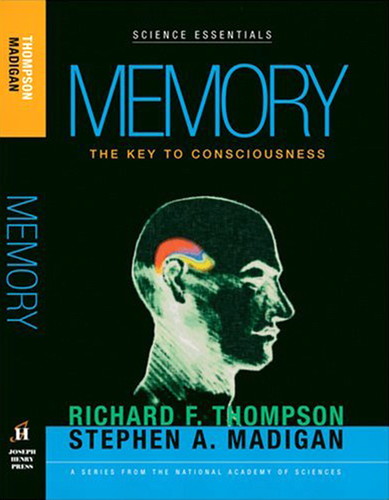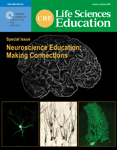Learning the Hard Way
How do people learn? When reading this question, I suspect you have one of two reactions: “Well that seems straightforward,” or “Wow, what a complex question!” We fall into the latter group. For starters, in order to fully answer this question, you must understand the biological process of learning. In other words, how does the brain work? Unlike other organs, even if we knew how each of the more than 100 billion neurons in the brain worked—not to mention the non-neural cells in the brain that outnumber neurons 10:1—we would still be at a loss to explain how this remarkable organ allows for consciousness and memory. Complicated though this question may be, it is also a question whose answer is fundamental to education at all levels.
Fortunately, a great deal of research has been conducted in recent decades to examine how people learn, how they encode that knowledge into memory, and also why they forget. One would suspect that educators, as learning professionals, would be well versed in these mechanisms of learning. However, there remains a great divide between these principles of learning and the practice of education. Undoubtedly this disconnect is due to many factors, not the least of which is that scientific findings are often rife with jargon that makes them indecipherable to all outside of the field. Therefore, in 1995, the National Research Council (NRC) set out on the daunting task of synthesizing developments in human learning research and using this research to evaluate how our society teaches. The NRC's report, published as How People Learn: Brain, Mind, Experience, and School, contains important and wide-ranging implications for the design of curricula, instruction, assessments, and learning environments.
The report is organized around a central set of three principles about learning and how they should be applied in education. The first recommendation is for teachers to engage the preconceptions that students inevitably have about any subject. Students are not empty vessels waiting to be filled with the knowledge flowing from a teacher's mouth. Rather, students at all ages arrive in the classroom with preconceptions and will always try to fit new information into these preconceptions. Regardless of whether or not these preconceptions are based on real facts, they will always influence learning as the student attempts to assimilate new information into what he/she believes to be true. To identify preconceptions, the teacher needs to design classroom tasks so that the student's thinking process can be revealed. Second, understanding in any area requires a deep factual knowledge of the subject; this deep knowledge consists of ideas that are organized into a context that facilitates retrieval and use. The explicit implication of this educational principle is that superficial coverage of all topics should be abandoned for in-depth coverage of a limited number of topics, stressing specific key concepts. Third, the authors emphasize the importance of student participation in his/her own learning by actively evaluating what they do and do not know. This is a process called “metacognition.”

How People Learn: Brain, Mind, Experience, and School thoroughly establishes the scientific rationale for the recommended core educational principles it presents. The authors use specific examples to illustrate how experts in different fields are able to access connected information, process it in an organized manner, and use a metacognitive perspective to monitor their own progress. The authors also cite cognitive psychology and biological neuroscience research to describe findings relating to how people learn from early childhood through adult life. Emphasis is placed on the brain's immense capacity to learn and functionally reorganize.
For those who want a more thorough discussion of how the brain encodes memory, Richard Thompson and Stephen Madigan provide a well-written, informative, and highly entertaining account of the current scientific understanding of memory formation. Written in a nontechnical manner, Memory: The Key to Consciousness provides a comprehensive discussion of how the human mind operates from both biological and behavioral points of view. They describe the many brain structures that are involved in memory formation while pointing out that the specific location of memory storage is still unknown. In addition, Memory introduces the reader to the idea that individual connections between neurons can be modified and why neuroscientists believe that this process is the cellular basis of learning and memory.
Memory and How People Learn often draw on much of the same research, but discuss the findings in different contexts. For example, experts (in any discipline) group bits of information together and encode this information as one “chunk” rather than encoding each bit individually. This chunking allows for greater memory capacity and ease of retrieval. The biological implications of this process are discussed in Memory, whereas its classroom implications are examined in How People Learn. As Thompson and Madigan point out, this ability to group information can be greatly enhanced with repeated practice. For example, one experiment involved the recall of a string of numbers. For most people briefly presented with a series of numbers, about seven digits is the upper limit of short-term memory recall. With great practice, one subject was able to increase recall to 70 digits, by associating groups of numbers with something familiar and meaningful (track times). However, when given a list of random letters instead of numbers, his short-term recall was again back to seven letters. Rather than increasing the overall capacity of memory storage, the subject had improved memory by building on information already encoded into long-term memory. In other words, your memory is built on your preconceptions!
As a blueprint for educational revolution, How People Learn can be a little overwhelming. The recommendations require coordination at many levels, including teacher and administrator as well as community and political groups. Fortunately, the NRC has published two additional texts: How People Learn: Bridging Research and Practice and How Students Learn: History, Mathematics, and Science in the Classroom. How People Learn: Bridging Research and Practice sets out to develop means by which the insights of the detailed report could be transmitted into the classroom. The result is that this text is the broadest in scope (but shortest in length) of the three books, outlining without extensively expanding on the key research findings. This outline format makes this book an excellent choice to be read first, followed by the expanded version, How People Learn: Brain, Mind, Experience, and School, for a more detailed analysis. The focus of Bridging Research and Practice is to make suggestions for implementation of the recommended educational principles at a variety of levels from classroom teaching to broader educational policy at school district and governmental levels. A particular strength of this book is that it incorporates the feedback of educators and policy makers to How People Learn: Brain, Mind, Experience, and School, highlighting both its usefulness for teaching policy and the significant challenges faced in implementing the policy in classroom practice.
Finally, in How Students Learn: History, Mathematics, and Science in the Classroom, the NRC provides teachers with a guide to implement the educational principles described in the How People Learn report. This report provides detailed examples of successful teachers and the methods they employ to teach history, mathematics, and science at the elementary, middle, and high school levels. An important point of emphasis is that the book is meant as a reference for teachers, with some specific examples that can be used to influence their thinking and teaching. It is not meant as a lesson planner for different subjects. Viewed in this manner, it is an excellent reference that can help teachers see how core principles can be used to engage and teach students of different ages to maximize understanding in different fields.
An important point reiterated in each of the NRC reports is the requirement for adult (teacher) learning in this process of education reform. Critical to this process is a supportive community both within a given school system and among educators at all levels throughout the country. As stated earlier, the reform outlined in the How Students Learn series can seem overwhelming. However, the techniques and principles detailed in How Students Learn are already being implemented in classrooms around the country, and communities supportive of these changes are emerging, even at the college level. For example, information about how this implementation is being accomplished at the college level can be found at the Faculty Institutes for Reforming Science Teaching (http://www.first2.org/) and The Wisconsin Program for Scientific Teaching (http://scientificteaching.wisc.edu/) Web sites. It seems fitting that, as we learn more about the biology of learning, we scientists should be among the first to apply them to our own classes.



